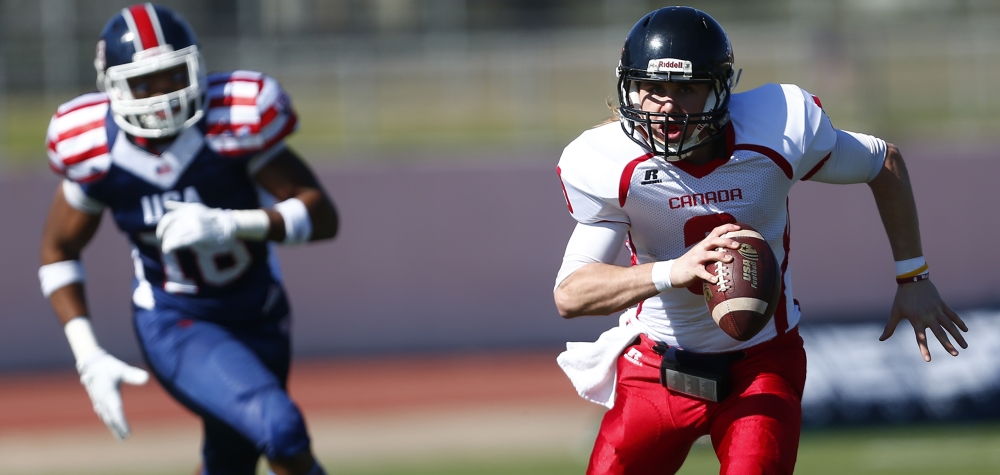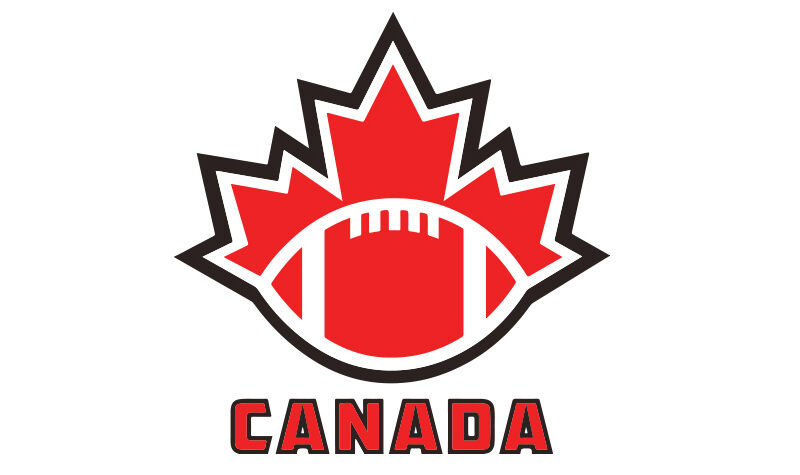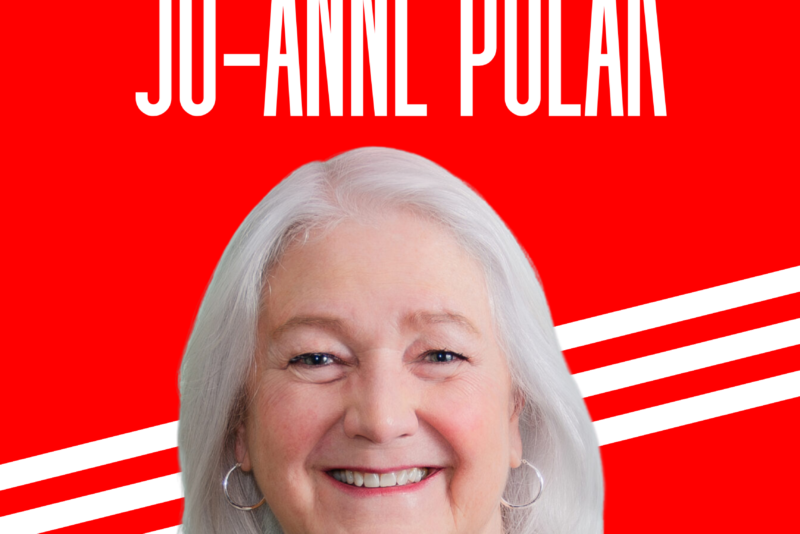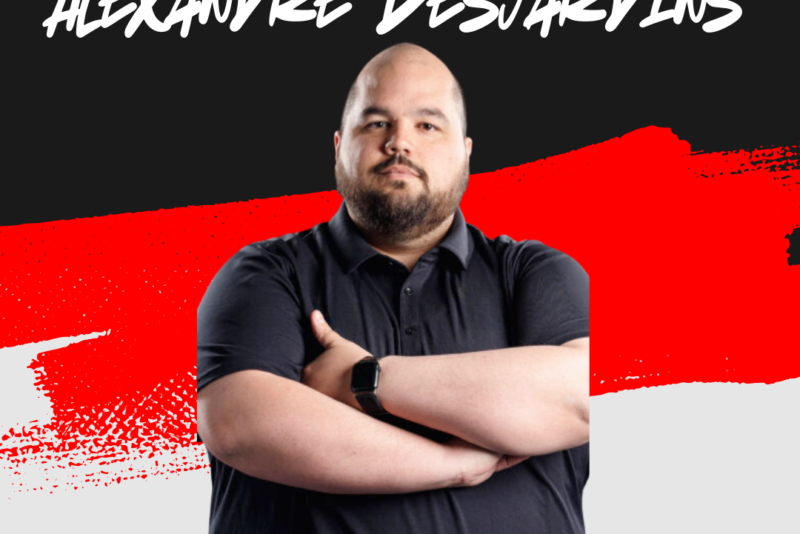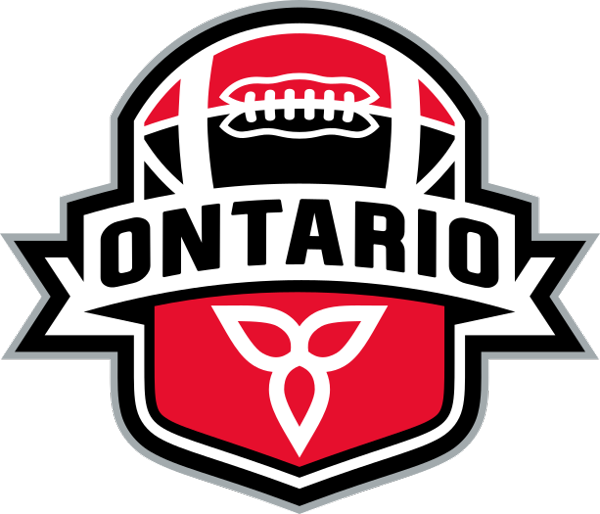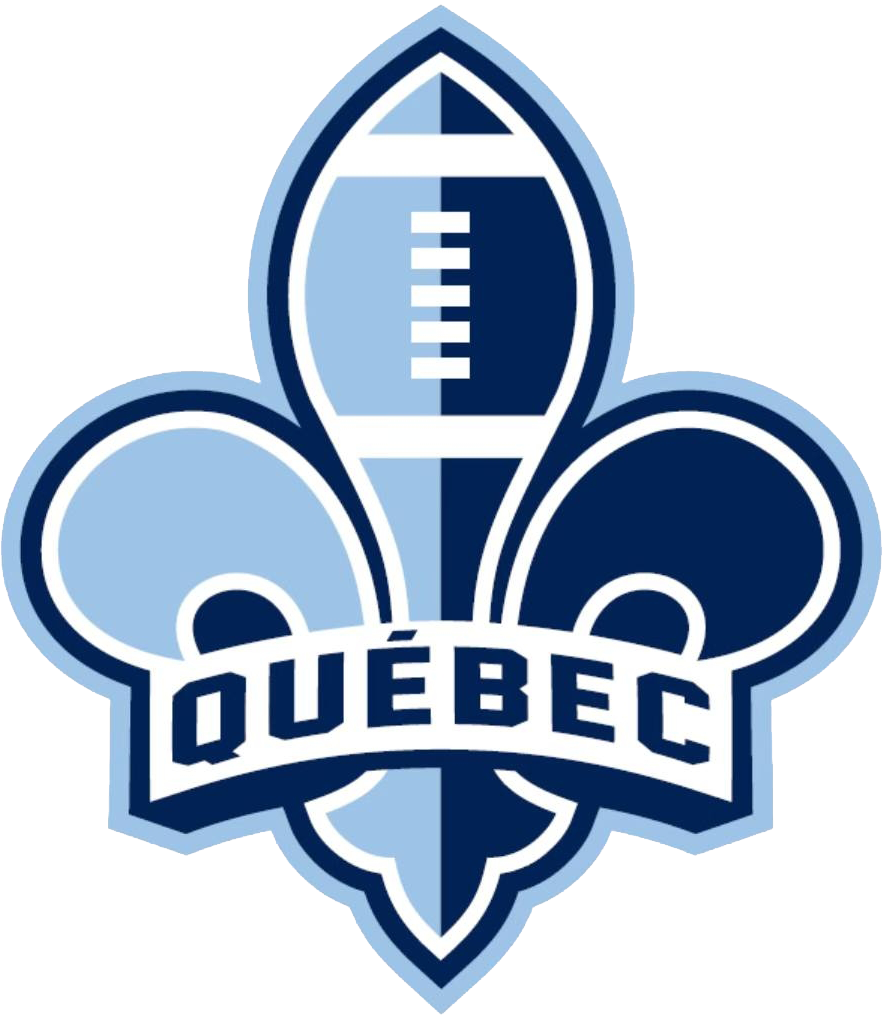Building a program, part I: Past experience sets stage for Sumarah’s new role
Photo credit: USA Football / Ron Jenkins
Many coaches dream of building a football program from the ground up, but very few get the opportunity to do so at the Canadian university level.
Incoming Junior National Team head coach Steve Sumarah is just beginning his time with the program, but he’s one of the rare coaches that had the opportunity to build a university football program from scratch.
In 2013, Sumarah led the return of the Carleton Ravens after a 13-year hiatus.
Sumarah’s term with the national team starts at an exciting time in Football Canada’s history as its high performance programs were recently recognized by Sport Canada. This acknowledgement is an important step as it opens doors for federal funding, specifically for national teams – a first for football in Canada. It also comes with directives to continue to develop a national team program.
Canada has met the U.S. in the first four IFAF U19 World Championship finals, capturing gold in 2012 and 2016 while taking home a pair of silver medals at the inaugural 2009 event in Canton, Ohio as well as in 2014 in Kuwait.
The program is just starting to move from a one-and-done team to a true program that players are a part of for multiple years. The pathway is starting to develop as many national team athletes progress from the Football Canada Cup (under-18 national championship) to the International Bowl and on to the world championship. Much of the infrastructure to support player’s growth within the program is also being developed.
***
The Nova Scotia native previously coached at both St. Mary’s and St. FX, two programs with rich football traditions. He always wanted to build a program from ground zero, but had no idea of the magnitude of that challenge.
“It really has been a way more challenging adventure than I envisioned,” Sumarah said of his start at Carleton. “When I started on day one, there was really nothing in place. It was a bit of an eye opener.”
Sumarah worked his way through milestones like the construction of a new locker room, ordering football gear, hiring a coaching staff and branding the team. His next challenge was to assemble a roster of 50-60 rookies.
He recognized that starting out, he was going to be the face of the program. “I was going to have to sell people on Carleton and what we’re all about,” he recalled. This challenge is similar to the national team as awareness is slowly building to the caliber of play internationally.
“You know I kind of see the same thing (with the national team). Having people understand the value of this program and what they’re going to bring to the program and in turn what the program will bring to them. I think sometimes, that’s the piece that gets lost and that’s the piece that has to sell, is that how you’re going to make this program better, but on the same side, this program is going to make you better.”
Although the national team is already established, Sumarah can use his previous program development experience to move the program forward.
“It’s about finding the right people, with the right attitude and the right mentality that are not afraid of the challenge of starting from ground zero.”
As he puts his coaching staff together and begins to identify players, he’ll keep that ethos in mind.
“You got to find kids who have character. Just reverting back to Carleton, in our first year we recruited 72 guys and you needed a different mentality to want to come to a team that you knew was going to take three or four years before it became competitive. Sometimes that’s not easy to do.”
“With character, you need to have a certain work ethic. You have to be prepared to roll up your sleeves and realize that this is not going to be easy. Time frames are slightly different when you talk about the national team and a university team, but the essence of it’s exactly the same.”
Sumarah also sees some parallels to recruiting and identifying players for his rebuild at Carleton and new task with the national team.
“I think in some ways, it’s very similar to what we had to do at Carleton, when I first started.”
“We had no facility so we were basically selling a program in a vision off of a powerpoint with some simple drawings.”
“I can say at times, people looked at you and thought you were crazy. Other times, guys could see the same vision that you did and those were the guys that are (at Carleton) today.”
As Sumarah transitions to head of the Canada’s junior program, he’ll try to mold the program around his coaching philosophy as he did when starting out at Carleton.
“I’ve got to keep everybody on the same page and buying into our philosophy. I’m a firm believer that we have to adapt, there’s always things that we need to do to improve upon areas but wholesale changes every year doesn’t get you down the path of success. It makes you look like you’re scrambling.”
“You’ve got to be true to what you believe in. It’s about the people and making sure that they’re put in situations to have the most success. Either from the coaches or from the players, having that opportunity to go out and compete and knowing that the toolbox is full. They have the chance to actually compete and be competitive and feel prepared and ready to do that.”
“You need strong leadership within your program, not only from the coaches but I think you need it from your team. You need guys that are prepared to make sacrifices. We’re talking about the elite of the elite. You may be the best kid on your team, but you may not be the best kid in this (national team) program, but you’re going to have a role and you’re going to have to understand your role and you’ve got to want to succeed at your role, whatever that is, for the betterment of the team. As long as you continue to put team first, they’re going to be successful. The minute we don’t, now we’re in trouble.”

